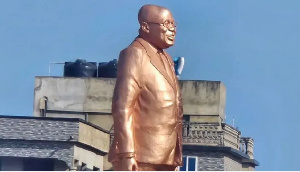Africa News of Monday, 21 August 2023
Source: theeastafrican.co.ke
Uganda, Rwanda pursue opposite policies to shield their economies
Rwanda and Uganda this week adopted divergent policies to shield their economies against uncertainties.
National Bank of Rwanda (NBR) on Thursday raised its policy rate by 50 basis points in an effort to contain inflationary pressures and protect economic growth.
Bank of Uganda (BoU) on the other hand cut the rates to 9.5 percent for August in a surprise move that highlighted Kampala’s strong worries among monetary policy makers surrounding tough economic conditions affecting several sectors.
The NBR raised its rate to 7.5 percent, having initially sustained it at 7 percent despite pressure from the IMF to further tighten monetary policy.
In May, the Rwandan central bank had decided to maintain its policy rate unchanged at 7 percent.
John Rwangombwa, NBR Governor, said no further increments are expected as inflation is expected to be contained to single digits by next year.
“This decline is expected for all main components: Core, energy and fresh food inflation. We don’t see this rate increasing further, and we remain optimistic that inflation further reduces to our benchmark by next year…” Rwangombwa said announcing the rate-setting - committee’s decision.
Headline inflation is expected to fall within the band (below 8 per cent) - an average of 7.6 per cent in the fourth quarter by the end of the year to around 5 per cent next year, according to the Central Bank.
Rwanda's Consumer Price Index (CPI), the main gauge of inflation increased by 11.9 per cent year on year in July 2023 down from 13.7 per cent in June 2023. Headline inflation decreased to 15.2 per cent in the second quarter against 20.2 per cent in the first quarter.
Local analysts in Uganda had been betting on a stable 10 percent Central Bank Rate (CBR) — a pricing level maintained by Bank of Uganda for almost 12 months.
But a biting urge to stimulate economic recovery, in spite of a battered shilling, may have motivated the new move.
“I’m surprised by the rate cut,” said Benoni Okwenje, general manager for financial markets operations at Centenary Bank.
Mr Okwenje forecasts that the 0.5 percent cut will certainly bring down lending rates in the near future, though yields on some treasury bonds went up last week.
Uganda showed signs of economic recession in the first half of 2023 and a diminished private sector credit flows. BoU cited this in its policy rate cut. Uganda has had a lower inflation influenced by shrinking food prices.
Some sectors posted negative growth rates during the first six months, yet headline inflation dropped from 4.9 percent in June to 3.9 percent last month as falling food crop prices, lower fuel pump prices and subdued consumer demand patterns combined.
But a recent suspension of development funding support by the World Bank following Uganda’s enactment of the Anti-Homosexuality Act of 2023 triggered panic among some foreign investors and spurred a selloff in the foreign exchange market last week.
As a result, the Uganda shilling fell to record lows against the US dollar and grossed Ush3,770 per dollar before recovering some ground shortly after the latest BoU announcement — an indicator of cooling nerves within the investor community.
Additionally, unpredictable events linked to climate change might affect agricultural production.
Entertainment










